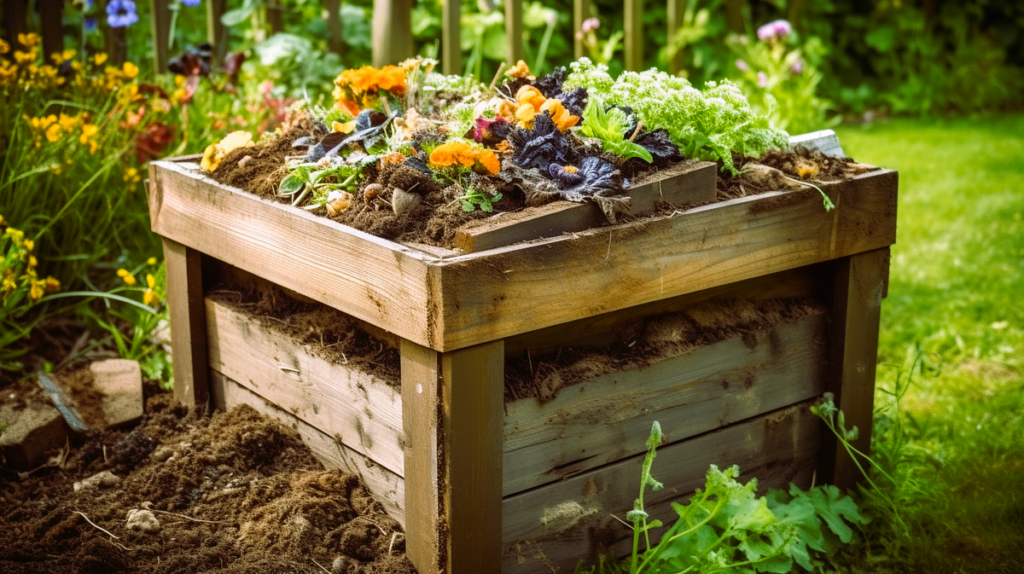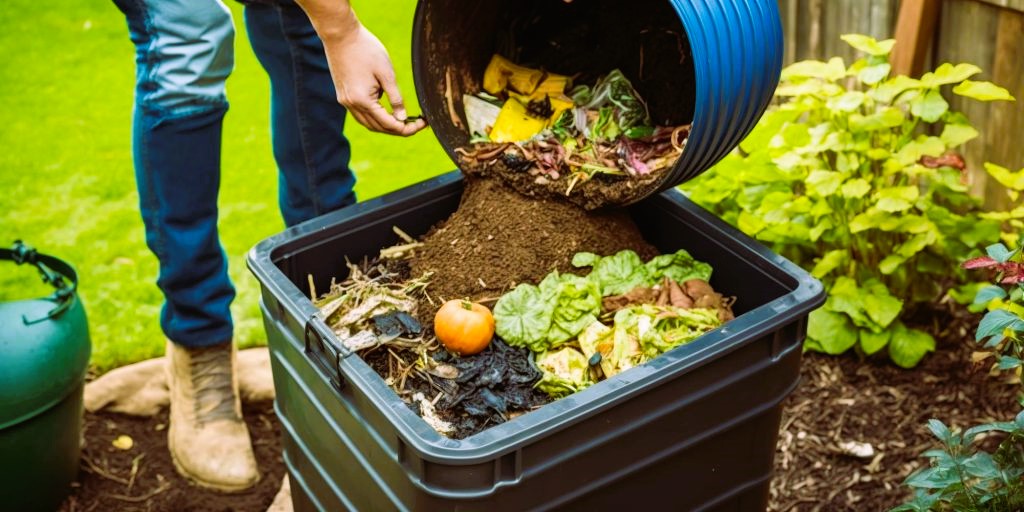Composting is a sustainable and eco-friendly practice that transforms kitchen scraps and organic waste into nutrient-rich soil conditioner. This process not only reduces the amount of waste sent to landfills but also provides gardeners with a valuable resource for cultivating healthy and thriving plants. In this comprehensive guide, we’ll delve into the basics of composting, exploring the benefits, methods, and essential tips for turning kitchen scraps into garden gold.
1. The Basics of Composting:
Composting is the natural decomposition of organic matter by microorganisms, turning it into nutrient-rich compost. The key components of successful composting include:
- Browns: Dry and carbon-rich materials such as dried leaves, straw, and shredded newspaper.
- Greens: Moist and nitrogen-rich materials such as kitchen scraps, green plant trimmings, and fresh yard waste.
- Water: Maintaining the right level of moisture is crucial for the composting process.
- Air: Turning or aerating the compost pile promotes oxygen flow, aiding in decomposition.
2. Benefits of Composting:

Composting offers a myriad of benefits, making it a worthwhile practice for both the environment and gardeners:
- Waste Reduction: Reduces the amount of organic waste sent to landfills, decreasing methane emissions.
- Soil Enrichment: Provides a nutrient-dense soil conditioner that improves soil structure and fertility.
- Reduced Need for Chemical Fertilizers: Compost naturally enriches the soil, reducing the reliance on synthetic fertilizers.
- Water Retention: Enhances soil’s water-holding capacity, reducing the need for frequent irrigation.
- Supports Microbial Activity: Fosters a healthy soil microbiome, promoting plant growth and disease resistance. Using farmhouse style in home decor, read more in our article on Rustic Chic.
3. Getting Started: Setting Up a Compost Bin:
Setting up a compost bin is the first step towards turning kitchen scraps into garden gold. Here’s a simple guide to get you started:
- Choose a Location: Select a well-drained area with good air circulation. Options include outdoor bins, tumblers, or indoor compost bins for smaller spaces.
- Layering: Alternate layers of browns and greens. Begin with a layer of browns at the bottom to aid in aeration.
- Moisture Management: Maintain a damp but not waterlogged compost pile. Add water as needed to keep the compost pile moist.
- Aeration: Turn the compost regularly to aerate and accelerate the decomposition process. Use a pitchfork or compost turner.
4. What to Compost:
Knowing what to compost is essential for a successful composting process. Here’s a breakdown of materials suitable for composting:
Greens:
- Fruit and vegetable scraps
- Coffee grounds and filters
- Tea leaves and bags
- Grass clippings
- Green plant trimmings
Browns:
- Dried leaves
- Straw or hay
- Shredded newspaper
- Cardboard (small pieces)
- Sawdust (in moderation)
Avoid:
- Meat and dairy products
- Greasy or oily foods
- Diseased plants
- Pet waste
- Non-biodegradable materials
5. Composting Methods:
There are various methods of composting, each with its advantages. Choose the one that suits your space and lifestyle:
- Traditional Composting Bin: Outdoor bins or piles are suitable for larger spaces and yards.
- Tumbling Composter: A rotating composter is ideal for small spaces and speeds up the composting process.
- Vermicomposting (Worm Composting): Uses worms to break down organic matter, making it suitable for indoor or small-space composting.
6. Troubleshooting Common Issues:
Composting is a natural process, but issues may arise. Here’s how to troubleshoot common composting problems:
- Smell: Foul odors may indicate too much moisture or improper aeration. Turn the compost and add dry browns.
- Pests: Unwanted pests can be attracted to the compost pile. Cover kitchen scraps with a layer of browns, and avoid adding meat or oily foods.
- Slow Decomposition: If the compost pile is not breaking down, check the balance of greens and browns. Ensure proper aeration and moisture levels.
7. Harvesting and Using Compost:

Compost is ready for use when it becomes dark, crumbly, and earthy-smelling. Harvesting compost involves:
- Ceasing New Additions: Stop adding new materials to the compost pile for a few weeks before harvesting.
- Use or Store: Use the finished compost in your garden to enrich the soil or store it in a covered bin for later use.
8. Additional Tips for Successful Composting:
- Chop or Shred Materials: Smaller pieces decompose faster. Chop or shred larger materials before adding them to the compost.
- Balance is Key: Maintain a balanced ratio of greens to browns for optimal composting.
- Layering: Layering materials evenly helps in proper decomposition and aeration.
- Avoid Synthetic Chemicals: Refrain from adding materials treated with synthetic chemicals or pesticides.
- Educate Yourself: Stay informed about composting best practices and troubleshoot as needed.
For more information on composting and sustainable practices, explore the following resources:
- Wikipedia – Compost
Conclusion
Composting is a rewarding and eco-friendly practice that transforms kitchen scraps into a valuable resource for gardening. By adopting the principles of composting, individuals can contribute to waste reduction, soil enrichment, and sustainable living. From setting up a compost bin to troubleshooting common issues, this guide provides the essentials for turning kitchen scraps into garden gold. As you embark on your composting journey, remember that each compost pile is a small step toward a healthier planet and a greener, more vibrant garden. Happy composting!


